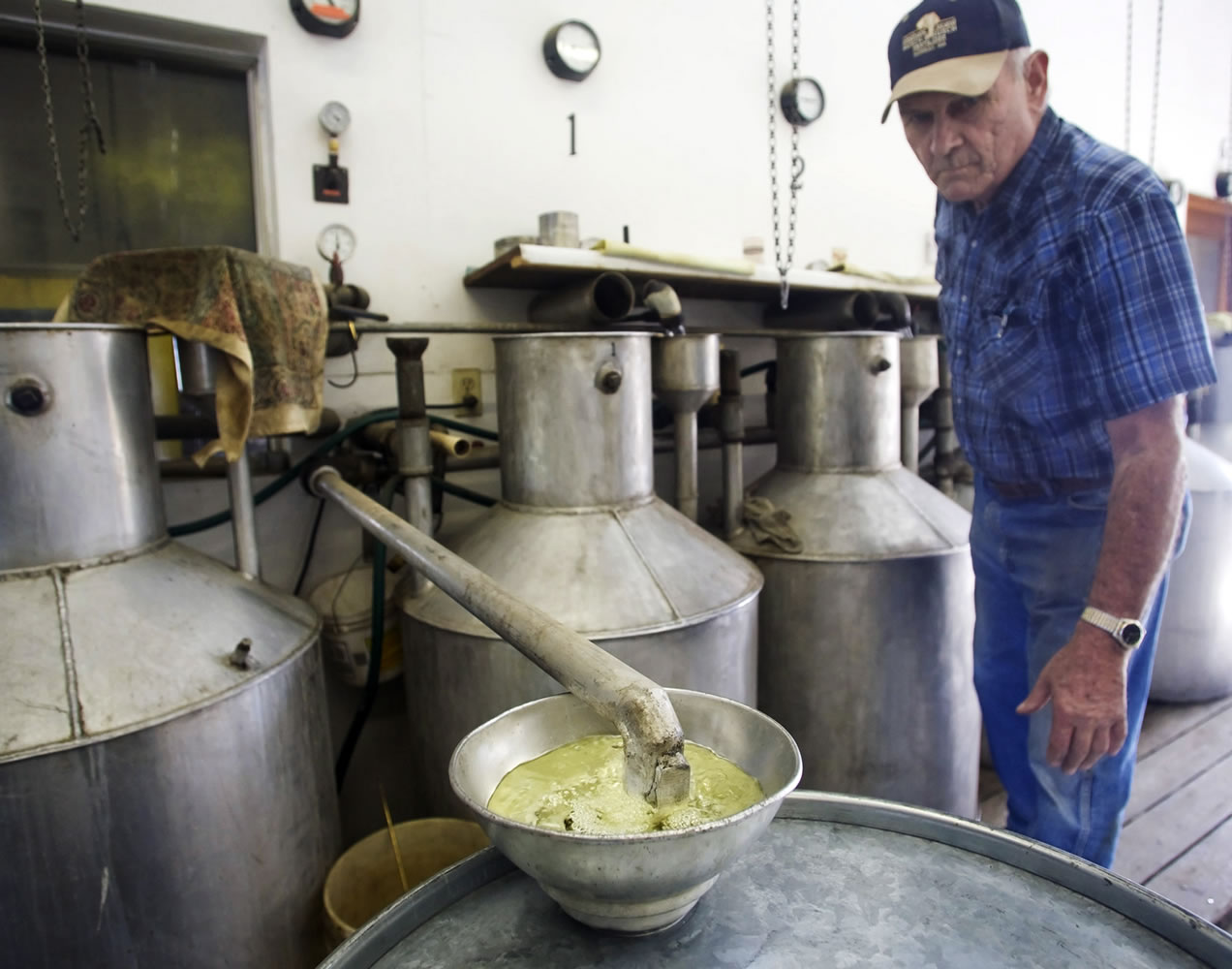KENNEWICK — Washington produces enough mint oil each year to supply every American resident with 135 sticks of gum.
Columbia Basin farmers fill 55-gallon drums with the oil they steam out of the green leaves of the mint plant, which looks similar to alfalfa hay.
Just one of those drums can flavor 5 million sticks of gum, said Rod Christensen, executive director of the Kennewick-based Washington Mint Commission.
“It doesn’t take much to do a lot of flavoring,” he said.
For example, there is about a drop of mint in a tube of toothpaste, he said.
Washington is the leading producer of mint oil nationwide. Washington farmers produce the most spearmint oil and the second-most peppermint oil, with about 17,000 acres of spearmint and 16,000 acres of peppermint, Christensen said.
Together, that produces about 3.5 million pounds of mint oil annually, valued at about $80 million.
Washington is the largest mint-producing area in the world when it comes to spearmint and peppermint, Christensen said.
Most of the 150 mint growers in the state are in Adams, Grant and Yakima counties, Christensen said. Mint seems to do best near the 45th parallel.
The plant does well in Washington’s soil and with the area’s warm days and cool nights. Mint is an irrigated crop in the Columbia Basin and requires quite a bit of water, he said. It is a perennial and needs to go dormant in the winter, which seems to help with the oil quality, Christensen said.
One of Washington’s major advantages is having the “best quality in the world,” Christensen said. And the state is competitive in price.
Steam distillation
Mint plants typically last about four years, although native spearmint can last about eight years, Christensen said.
The mint plant, called mint hay, is harvested and goes into a mint still — a steam distillation plant on the farm in which mint hay is cooked with steam. Christensen said the steam takes oil out of the leaves and condenses it to liquid. The oil, lighter than water, goes to the top and is skimmed off.
It then is poured into 55-gallon drums that the farmer sells to the dealer, he said.
After the mint oil is extracted, what is left is a trailer of dark-colored, cooked hay, Christensen said. The mint trash, also called “slugs,” is generally spread on a field and plowed under.
Mint dealer Labbeemint buys about 80 percent of its mint oil from growers who it contracts with, said Craig St. Hilaire, sales manager for Labbeemint near Harrah, a western Yakima Valley town. That includes farmers from the Yakima growing region, which includes the upper Columbia Basin near Othello and Moses Lake, the Yakima Valley and Hermiston, Boardman and Umatilla.
Labbeemint delivers empty barrels to growers and returns to pick up oil from the growers at their mint facilities as the drums are filled.
Harvest begins in July and starts to tail off in September, St. Hilaire said. A few growers are still distilling mint oil, but most are done or close to being finished.
In the Yakima growing region, some peppermint is harvested twice a year, while it is cut annually in most other places. Spearmint is harvested two times a year.
Labbeemint processes the essential oil, which includes filtering, blending and distilling it a second time, St. Hilaire said.
Although it has already been distilled on the farm, St. Hilaire said Labbeemint cleans it up. It also keeps peppermint and spearmint separate, although some customers will blend the two in their product, St. Hilaire said.
Chewing gum may be advertised as peppermint, but it probably has spearmint too, Christensen said. Peppermint has a burst of flavor, while spearmint is a mellow flavor that lasts a long time.
Labbeemint processes mint oil all year, St. Hilaire said. It has 45 employees, including at its main facility in Harrah and other offices in the nation.
Labbeemint analyzes the mint oil for about 25 major components, including menthol, menthone and furan, St. Hilaire said.



